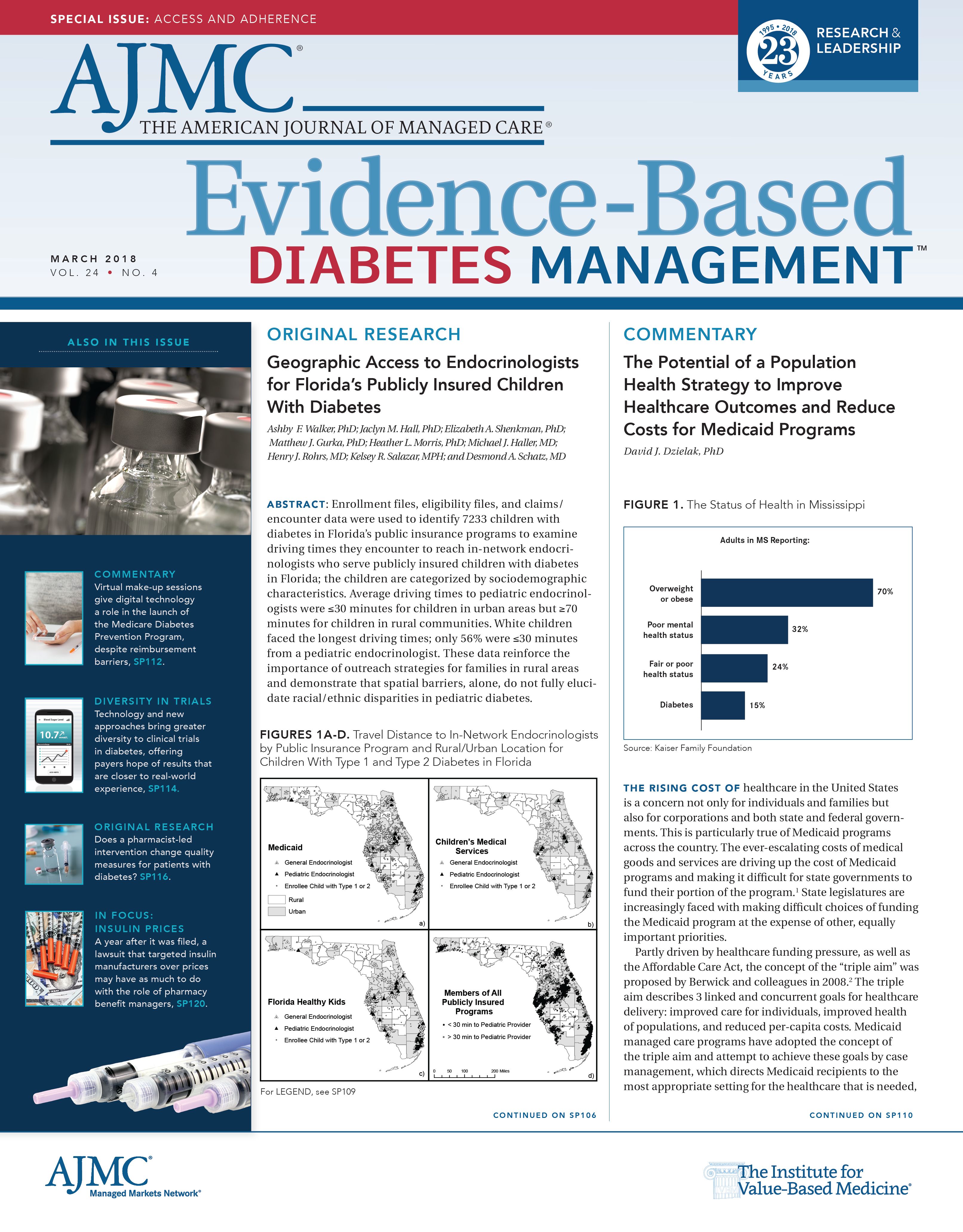Publication
Article
Evidence-Based Diabetes Management
Guidance That Allows for Higher A1C Misses the Mark
Author(s):
A commentary from our editor-in-chief on the recent guidance from the American College of Physicians regarding glycemic control for adults with type 2 diabetes.
Diabetes is complicated. It can occur at different times across the lifespan, both in otherwise healthy people and in those who have other comorbidities. These differences call for
care plans that are both personalized and patient-centered, for this crucial reason: day-to-day management of diabetes is done largely by the patient.
It is curious, then, what message the American College of Physicians (ACP) hoped to send to people living with diabetes with a March 6, 2018, guidance published in Annals of Internal Medicine, which says most adults with type 2 diabetes (T2D) can aim for glycated hemoglobin (A1C) targets between 7% and 8%. Separately, it says clinicians should
consider deintensifying medication for those with A1C levels less than 6.5%.1 The American Diabetes Association, the American Association of Clinical Endocrinologists, the American Association of Diabetes Educators, the Joslin Diabetes Center, and the Endocrine Society joined together to strongly oppose the ACP guidance, saying this message overlooks the years of work by professional organizations with a particular interest in diabetes care to create current guidelines.2
What is the objective of a guideline? A guideline seeks to ensure optimal care in the setting where it is delivered. For most people with diabetes, especially those with T2D, that
setting is the primary care clinic (this is one reason why the ACP guidance has caused such alarm). From the perspective of the diabetes specialist, the ACP not only gives less weight to recommendations from professionals who specialize in diabetes care, but the guidance also completely ignores new therapies now available to achieve tighter glycemic goals, such as the sodium glucose co-transporter-2 inhibitors and the glucagon-like peptide-1 receptor agonists. These agents can significantly lower cardiovascular disease risk and do not cause hypoglycemia, a traditionally limiting factor intensive glucose control. When insurance will pay, some patients can take newer therapies with metformin in convenient combination formulations.
To me, the greatest surprise in the ACP recommendations is the lack of concern for our younger patients with T2D. Data from CDC show T2D incidence is occurring at younger
ages, but with today’s treatments, these patients should have decades of life ahead of them. And while the evidence of glucose control in pregnancy was not reviewed, do we
want to invite an increase in unplanned pregnancies among mothers who have A1C levels above 8%?
The fine print in the Annals article may say each patient should consult with his or her doctor, but with adherence already a challenge, some patients will only see the headline
and stop taking their medication. Shortly after the ACP announcement, a colleague shared that her father, in India, was delighted that he can now stop taking his diabetes drugs,
so the change has already had an international impact.
The authors reviewed earlier studies concluding that targeting A1C to below 7% had little to no benefit in reducing the progression of microvascular or macrovascular events. This statement paints a misleading picture of equal risk of complications in all patients with diabetes, ignores what medications they were treated with, and assumes “treat-to-target” is the focus of diabetes care. Authors of the Annals article acknowledge their guidance does not consider results from cardiovascular outcomes trials, which have shown that newer therapies reduce the risk of cardiovascular disease and heart failure, the most common cause of morbidity and mortality in patients with diabetes, and one that brings significant costs to the healthcare system.
This should be of interest to health plans. So, too, should a statement from ACP President Jack Ende, MD, MACP, who told a news outlet that patients’ A1C targets “are being used
now as a performance measure.”3 This is true, but if getting patients to goal is proving difficult for some, the answer should be to find new therapeutic or behavioral strategies for
patients who are struggling—not to move the goal posts.
Will there always be some patients with T2D who have difficulty bringing their A1C level below 7%? Yes. But payers should see this as the exception, not the norm. If not, there is great concern that many patients will remain at A1C levels above 8%, which puts them at increased risk for complications, including cardiovascular disease. Joslin Diabetes Center and professional societies that have long advocated for tighter glycemic control stand ready to share best practices with our fellow clinicians in primary care, to do what is best for patients. Robert A. Gabbay, MD, PhD, FACP, is senior vice president and chief medical officer at Joslin Diabetes Center in Boston, Massachusetts. He is editor-in-chief of Evidence-Based DIabetes Management.References
1. Qaseem A, Wilt TJ, Kansagara D, et al. Hemoglobin A1C targets for glycemic control with pharmacologic therapy for nonpregnant adults with type 2 diabetes mellitus: a guidance statement update from the American College of Physicians [published March 6, 2018]. Ann Intern Med. doi:10.7326/M17-0939.
2. The American Diabetes Association, the American Association of Clinical Endocrinologists, the American Association of Diabetes Educators and the Endocrine Society Strongly Disagree with the American College of Physicians’ guidance for higher blood glucose targets for people with type 2 diabetes [press release]. Arlington, VA: American Diabetes Association. diabetes.org/newsroom/press-releases/2018/joint-acp-guidance-response. html. Published March 9, 2018. Accessed March 25, 2018.
3. Gordon S. Doctors group issues controversial type 2 diabetes guidance. CBS News website. cbsnews.com/news/doctors-group-issues-controversial-type-2-diabetes-guidance/. Published March 6, 2018. Accessed March 25, 2018.






